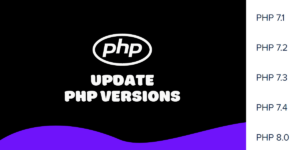I am quite new to broadcasting/websockets and I am attempting to set up Laravel Websockets and pusher.
Using my subdomain.example.com I can get subdomain.example.com/laravel-websockets working and events get listed on the screen when I fire them using php artisan tinker and when I create an event on the page. However I need this work inside a path subdomain.example.com/api/laravel-websockets
When I try the url with /api although it loads the dashboard as expected it fails to connect and from looking in the console I can see it is ignoring the /api in its requests, e.g. for Auth: http://subdomain.example.com/laravel-websockets/auth instead of http://subdomain.example.com/api/laravel-websockets/auth. This applies to everything in the console. Even when I edit the request in the console to add the /api it works.
Is there somewhere I can change the base path?
Here is my .env file:
APP_URL=http://subdomain.example.com/api/
LOG_CHANNEL=daily
BROADCAST_DRIVER=pusher
CACHE_DRIVER=file
SESSION_DRIVER=file
QUEUE_DRIVER=sync
REDIS_HOST=127.0.0.1
REDIS_PASSWORD=null
REDIS_PORT=6379
APP_NAME==test
PUSHER_APP_ID=1234
PUSHER_APP_KEY=1234
PUSHER_APP_SECRET=secret
PUSHER_APP_CLUSTER=mt1
Here is my config/websockets.php pusher config
'dashboard' => [
'port' => env('LARAVEL_WEBSOCKETS_PORT', 6001),
],
'apps' => [
[
'id' => env('PUSHER_APP_ID'),
'name' => env('APP_NAME'),
'key' => env('PUSHER_APP_KEY'),
'secret' => env('PUSHER_APP_SECRET'),
'enable_client_messages' => true,
'enable_statistics' => true,
],
],
and my config/broadcasting.php
'driver' => 'pusher',
'key' => env('PUSHER_APP_KEY'),
'secret' => env('PUSHER_APP_SECRET'),
'app_id' => env('PUSHER_APP_ID'),
'options' => [
'cluster' => env('PUSHER_APP_CLUSTER'),
'encrypted' => true,
'host' => '127.0.0.1',
'port' => 6001,
'scheme' => 'http'
],
],
Edit: Adding my config to show how /api is working where /var/www/example is the root folder of my Laravel application
<VirtualHost *:80>
ServerAdmin webmaster@localhost
ServerName subdomain.example.com
ServerAlias subdomain.example.com
Alias /api /var/www/example/public
<Directory /var/www/example/>
Options Indexes FollowSymLinks
AllowOverride All
Require all granted
RewriteEngine On
</Directory>
DocumentRoot /var/www/example/client-side
ErrorLog ${APACHE_LOG_DIR}/error.log
CustomLog ${APACHE_LOG_DIR}/access.log combined
in public/.htaccess I have the following:
RewriteBase /api/
Edit
I see that I can get this working if I add api/ to the javascript request paths right in the dashboard.blade.php which makes me think the solution is have a version of that file running. However I dont think this solves the overall issue. I would rather do this correctly. (see authEndpoint below)
connect() {
this.pusher = new Pusher(this.app.key, {
wsHost: this.app.host === null ? window.location.hostname : this.app.host,
wsPort: this.port === null ? 6001 : this.port,
wssPort: this.port === null ? 6001 : this.port,
wsPath: this.app.path === null ? '' : this.app.path,
disableStats: true,
authEndpoint: '/api/{{ request()->path() }}/auth',
auth: {
headers: {
'X-CSRF-Token': "{{ csrf_token() }}",
'X-App-ID': this.app.id
}
},
enabledTransports: ['ws', 'flash']
});

 Question posted in
Question posted in 

2
Answers
I will not mark this as the answer until someone has a better suggestion but I had to override
dashboard.blade.phpand make my own one inresources/views/beyondcode/laravel-websockets/dashboard.blade.phpand add/apiwhere all calls are made.This actually fixed another issue I was having too in relation to not getting the real time graph.
I’m using Laravel 6.x and in
dashboard.blade.phpI replacedrequest()->path()withRequest::getRequestUri()on line 121 and 165, that provides a dynamic solution, but I still had to orderride the vendordashboard.blade.phpfile… so opened an issue on github.